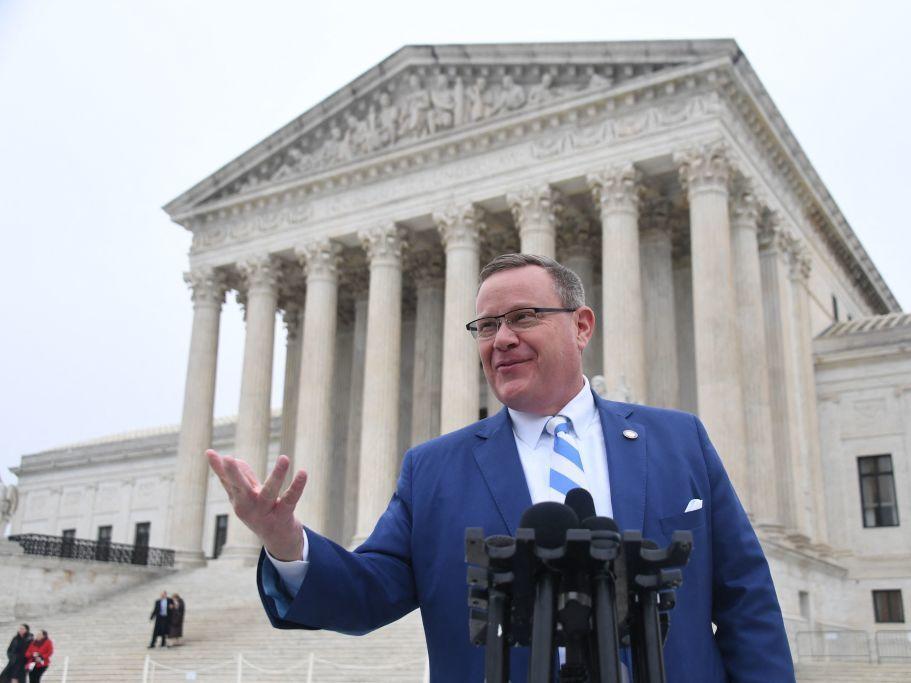Section Branding
Header Content
Supreme Court weighs controversial election-law case
Primary Content
The U.S. Supreme Court heard arguments Wednesday in the marquee case of the term, a case that could radically reshape the way federal elections are conducted across the country.
At issue is the so-called independent state legislature theory, put forth in this case by North Carolina's state legislature. If adopted it would give state legislatures the power to put in place all manner of election laws and rules, without any review by the state courts. At its most extreme, the theory could eliminate not just state judicial power over elections, but governors' vetoes, and possibly would allow state legislatures to certify presidential electors who were not approved by the voters, an idea that Donald Trump tried, unsuccessfully, to put forth in 2020.
How the justices viewed the arguments
In the particular case before the justices Wednesday, the North Carolina Supreme Court ruled that Republican-dominated state legislature, in drawing new congressional districts after the 2020 Census, violated the state
constitution with an extreme partisan gerrymander.
During three hours of arguments, three camps of justices emerged. The court's three most conservative justices--Clarence Thomas, Samuel Alito and Neil Gorsuch--favored some version of the independent state legislature theory. The three most liberal justices--Sonia Sotomayor, Elena Kagan, and Ketanji Brown Jackson-- did not. And somewhere in between were Chief Justice John Roberts, and Justices Brett Kavanaugh and Amy Coney Barrett.
First up was lawyer David Thompson, representing the Republican state legislature. He told the court that the state courts have no authority under the U.S Constitution to rule on a state redistricting map. Justice Jackson reacted with incredulity.
"Is it your argument that the state constitution has no role to play, period?" she asked, to which Thompson answered, "That is our position."
Thompson subsequently qualified that answer, contending that the state courts could review procedural issues, but not substantive one. That distinction, however, seemed to baffle most of the justices.
"You do have a problem with explaining why these procedural limitations are okay but substantive limitations are not," Barrett told him.
Roberts and Kagan both pointed to the court's precedents as problematic for the state legislature's claim of exclusive power over elections. Roberts noted that the U.S. Supreme Court nearly a century ago unanimously upheld laws giving governors power to veto election laws passed by the legislature.
Ultimately, Justice Sotomayor grew so impatient with lawyer Thompson's contention that history supported his position that she let fly this comment: "Yes. If you rewrite history, it's very easy to do."
Kavanaugh pointed to a concurring opinion written by Chief Justice William Rehnquist in the controversial case that decided the 2000 election, Bush v. Gore. Rehnquist's opinion was joined by two other justices, Antonin Scalia and Clarence Thomas. Your position, Kavanaugh told lawyer Thompson, seems to go further than even that concurring opinion, which acknowledged state courts "would have a role in interpreting state law and that federal court review of that, should be, in [Rehnquist's] words, 'deferential.'"
The state's argument
Lawyer Neal Katyal, representing groups of North Carolina voters, told the justices that the founders did not envision all-powerful state legislatures, unconstrained by courts and governors.
"Frankly, I'm not sure I've ever come across a theory in this court that would invalidate more state constitutional clauses as being federally unconstitutional, hundreds of them, from the founding to today," he said, later adding "the blast radius from their theory would sow election chaos, forcing a confusing two-track system with one set of rules for federal elections, and another for state ones."
For the most part, the argument eventually centered on how the court could let states do what they have always done--decide issues involving their own state constitutions--but with some constraints.
Chief Justice Roberts referred to the provision of the North Carolina constitution requiring a system of "fair and free" elections. "Do you think the phrase 'fair and free elections' is providing standards and guidelines?" he asked.
Yes, replied lawyer Katyal, and indeed some of those provisions are the most important and date back to the founding of the Republic. They are analogous, he said, to general provisions in the federal constitution, like the right of free speech, or equal protection of the law. And so, "the idea that you could just nullify those by saying they're too abstract is really problematic."
Following Katyal to the lectern was lawyer Donald Verrilli, representing the governor and other state officers who oppose what they see as a naked power grab by the state legislature.
He was pressed for a standard that would allow state courts to decide state constitutional questions, but have some limits. Or as Justice Alito put it: "Is your standard a standard that could be flunked?"
Yes, replied Verrilli. "I think a naked declaration that an act of the legislature under a free and fair Elections Clause is unfair, without any grounding in history or precedent" would fail the test."
A decision in the case is expected by summer.
Copyright 2022 NPR. To see more, visit https://www.npr.org.

